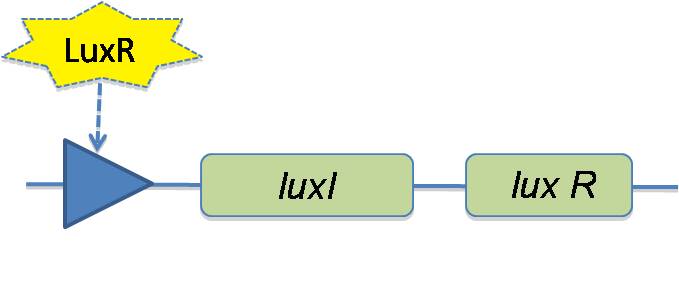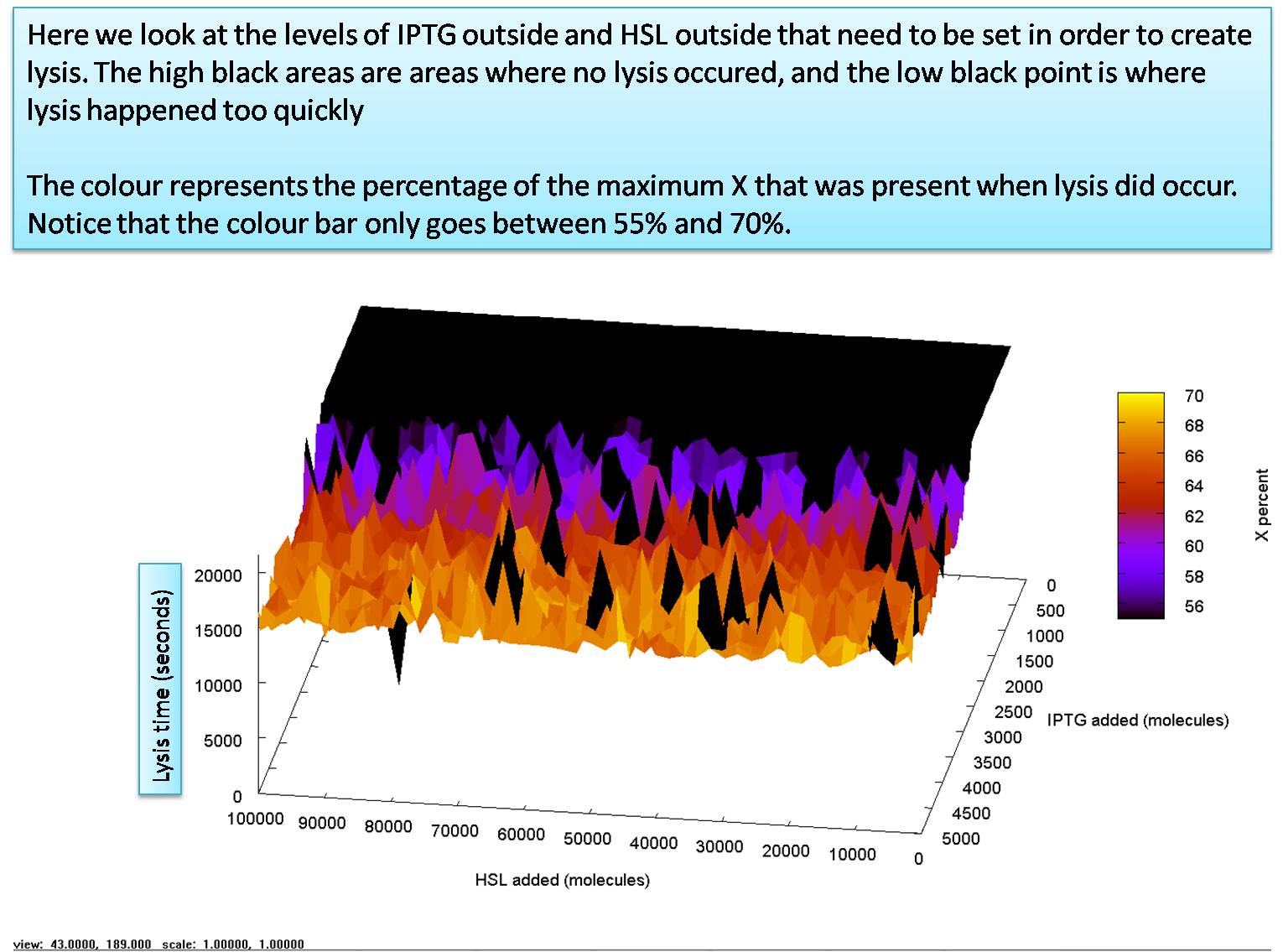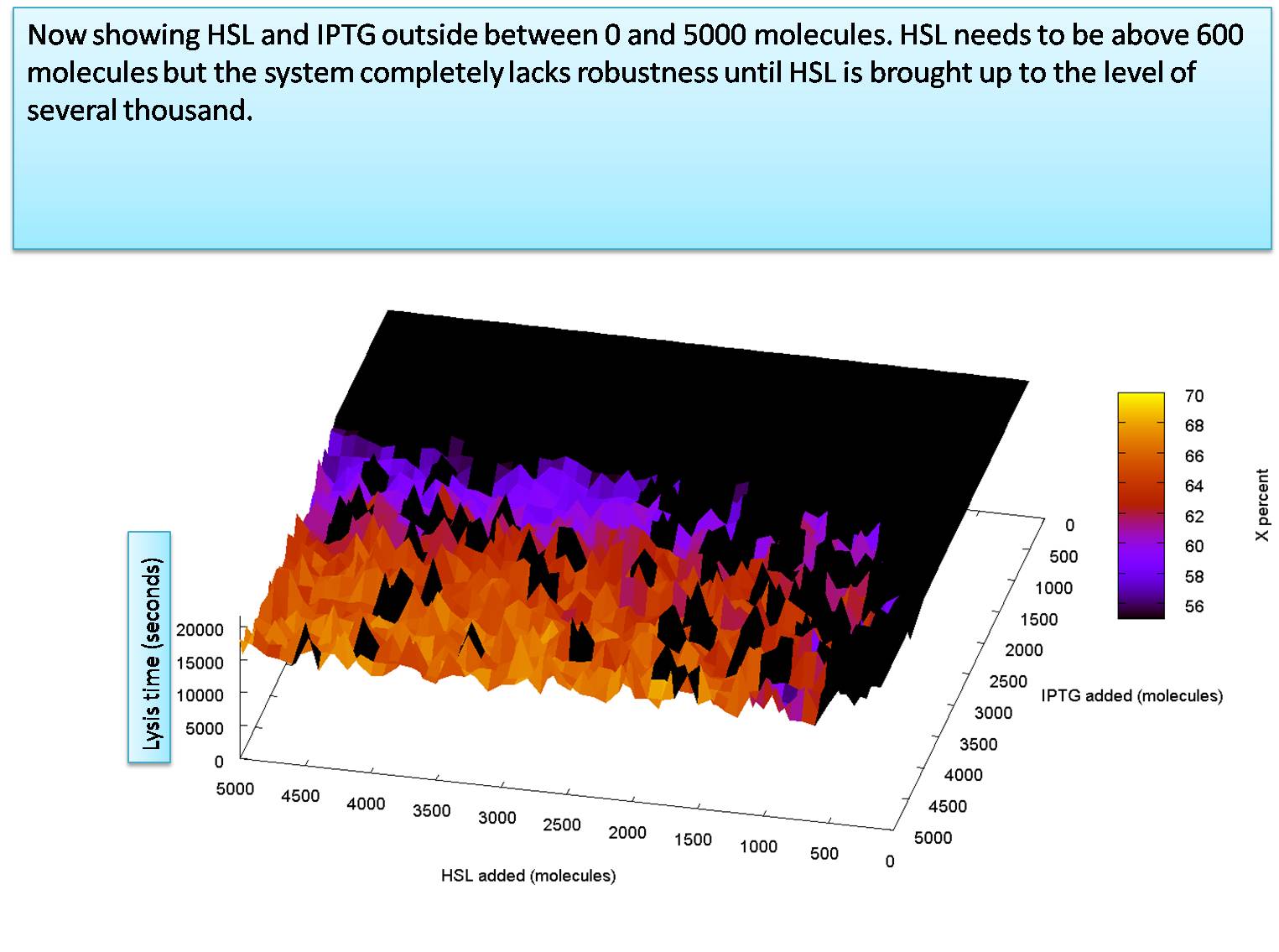Team:Aberdeen Scotland/parameters/invest 4
From 2009.igem.org
Nick Smart (Talk | contribs) (→The input dependant model) |
Nick Smart (Talk | contribs) (→Outside levels of IPGT and HSL required for success) |
||
| Line 37: | Line 37: | ||
| + | [[Image:Input Model Graph 2.jpg|center|700px]] | ||
| + | [[Image:Input Model Graph 3.jpg|center|700px]] | ||
| + | |||
| + | So we need about 6000 molecules of both HSL and IPGT for success... although this will depend on our 3 old K<sub>d</sub> values of K<sub>LacI</sub> K<sub>TetR</sub> K<sub>cI</sub> and our new one of K<sub>P</sub>. (P is the luxR HSL complex activating the lux boxes) | ||
| + | |||
| + | For this experiment the K<sub>d</sub> values are | ||
| + | |||
| + | |||
| + | K<sub>LacI</sub> = 700 molecules per cell | ||
| + | |||
| + | K<sub>cI</sub> = 5000 molecules per cell | ||
| + | |||
| + | K<sub>tetR</sub> = 3000 molecules per cell | ||
| + | |||
| + | K<sub>P</sub> = 200 molecules per cell | ||
| + | |||
| + | For now we will take our outside levels of IPGT and HSL to be 10,000 molecules. Although we have not yet calculated physically appropriate values yet. | ||
{{:Team:Aberdeen_Scotland/footer}} | {{:Team:Aberdeen_Scotland/footer}} | ||
Revision as of 13:32, 7 August 2009
University of Aberdeen - Pico Plumber
The input dependant model
For this model, we no longer assume a trivial process of repression of lacI being liften and QS being turned on. The LacI repression is now a repression / induction hill function with a Kd of 1200 molecules per cell for IPGT forming IPGT lacI complexes. We assume IPGT leaks into the cell from outside. We only set the outside concentration of IPGT. For quorum sensing all we set is an elevated HSL concentration outside which is free to defuse in. We now include a feedback loop into the QS mechanism. To do this we attach a lux box onto the plasmid for producing luxR and luxI, like so:
However, we are taking the production strengths of this lux box to be reduced in comparison to our lux box for producing X, Y and cI. The strengths are
Production max for X, Y and cI = 0.44 pops
taken from the iGEM page of ***** and personal communication with **** on ****
Production min for X Y and cI = 0.013 pops
taken from *****
Production max for QS feedback = 0.002 pops
Production min for QS feedback = 0.00015 pops
These values are taken from the paper “ FIOADAOIDFJAOFJASDIOJASOIJADOAJSDAFOJAFOAJSD”
An important new parameter is KP. This is the dissociation constant for “P” activating the lux boxes. P is the luxR/HSL complex . To take a break from the wordy descriptions we will now show some small sections of results for this model, which should be easily interpretable after following the section about the Monte Carlo analysis
Outside levels of IPGT and HSL required for success
The outside levels of IPGT and HSL are the only two assumptions we make in this model, let’s see what these assumptions need to be in order to achieve success
So we need about 6000 molecules of both HSL and IPGT for success... although this will depend on our 3 old Kd values of KLacI KTetR KcI and our new one of KP. (P is the luxR HSL complex activating the lux boxes)
For this experiment the Kd values are
KLacI = 700 molecules per cell
KcI = 5000 molecules per cell
KtetR = 3000 molecules per cell
KP = 200 molecules per cell
For now we will take our outside levels of IPGT and HSL to be 10,000 molecules. Although we have not yet calculated physically appropriate values yet.
 "
"


